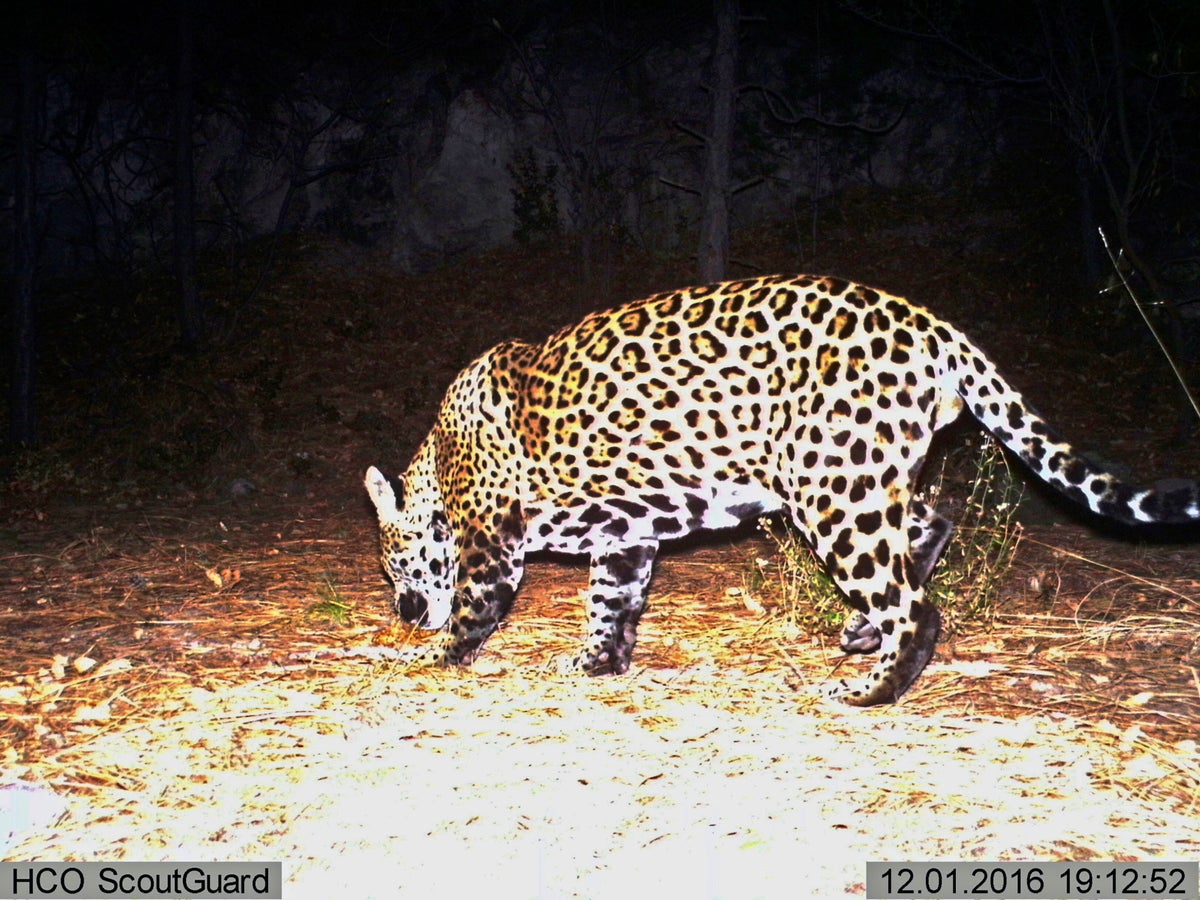
A rare jaguar was spotted on trail cameras in southern Arizona, suggesting to scientists that the endangered species could be slowly re-establishing its population in the US after years of habitat loss and other human impacts.
The big cat, a juvenile male, was spotted on cameras in March and May in the Sierra Vista Ranger District of Arizona’s Coronado National Forest, according to the US Fish and Wildlife Service.
Jaguars are only seen sporadically in Arizona, which along with New Mexico forms the northernmost tip of the creature’s 18-country range.
“These photos show that despite so many obstacles, jaguars continue to reestablish territory in the United States,” Russ McSpadden, a conservation advocate at the Center for Biological Diversity, said in a news release. “This is a wonderful reminder that these big cats move great distances across the landscape. It drives home the importance of protecting connected habitat for these elusive, beautiful felines.”
The images from the camera were too blurry to specifically identify the jaguar that was seen, according to wildlife experts.
There have only been three other jaguars seen in the past decade in the state, according to the Arizona Republic.
In 2012, a cat named El Jefe (The Boss in Spanish) was spotted in the Santa Rita Mountains, then reappeared in Mexico in 2015.
Another jaguar dubbed Sombra (Shadow in Spanish) was seen north of the Chiricahua Mountains since 2016.
Another specimen, Yo’ko (Yaqui for jaguar), was filmed multiple times in the Huachuca Mountains in recent years, only to cross the border into Sonora and be killed by a rancher. Yo’ko was found dead in 2019.
All of these jaguars were males. A female hasn’t been seen in Arizona since 1949.
"Males are the ones that expand and disperse. This means that when a jaguar becomes an adult it has to find new territories. There are more records of jaguars in the United States and in the border with Mexico because they are exploring for new territories," Ganesh Marin, a University of Arizona doctoral candidate who has helped monitor jaguar activity in the state, told Arizona Republic
Females, meanwhile, stay closer to their original territory and migrate more slowly, he said.
"At this point we only know that the population of jaguars (meaning males, females and cubs) is 100 miles south from the border, in the heart of Sonora," he added in his interview with the paper.
Wildlife advocates said the most recent jaguar spottings, not far from the former site of Arizona’s illegal shipping container border wall, underscored the need to protect cross-border wildlife corridors.
In August, the state agreed to pay $2.1m to the US government for damage to the border done by the wall, following a lawsuit from the Department of Justice against Arizona.







